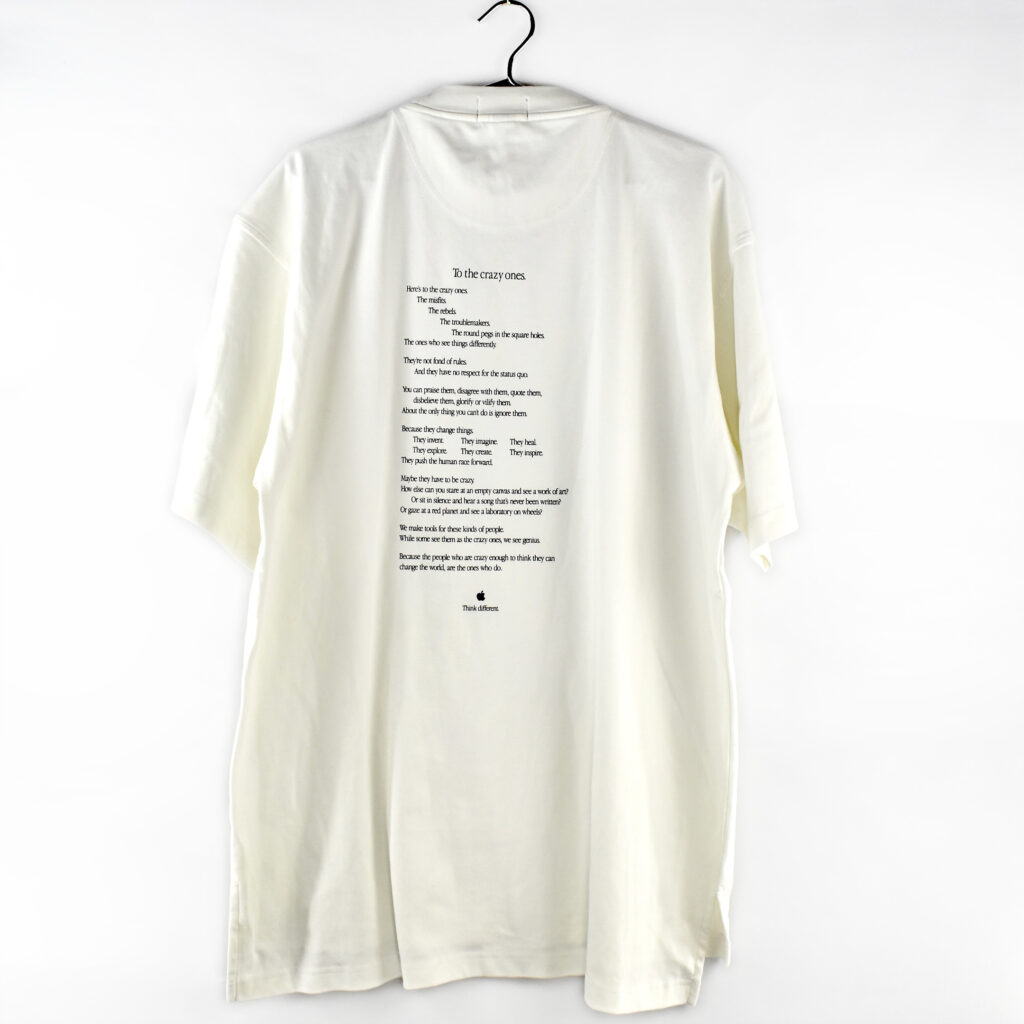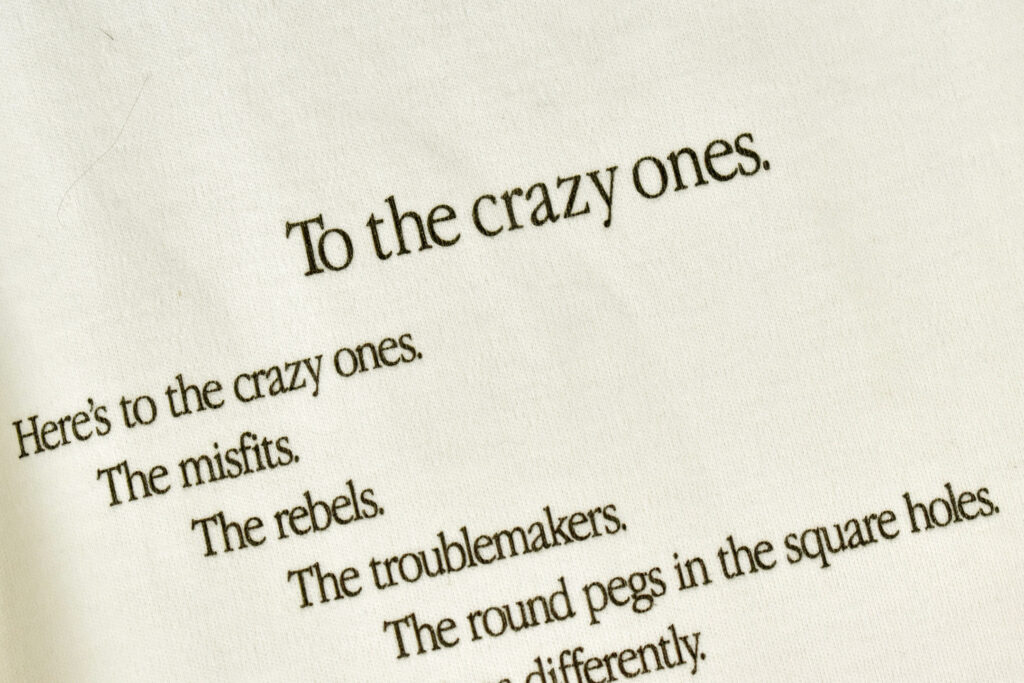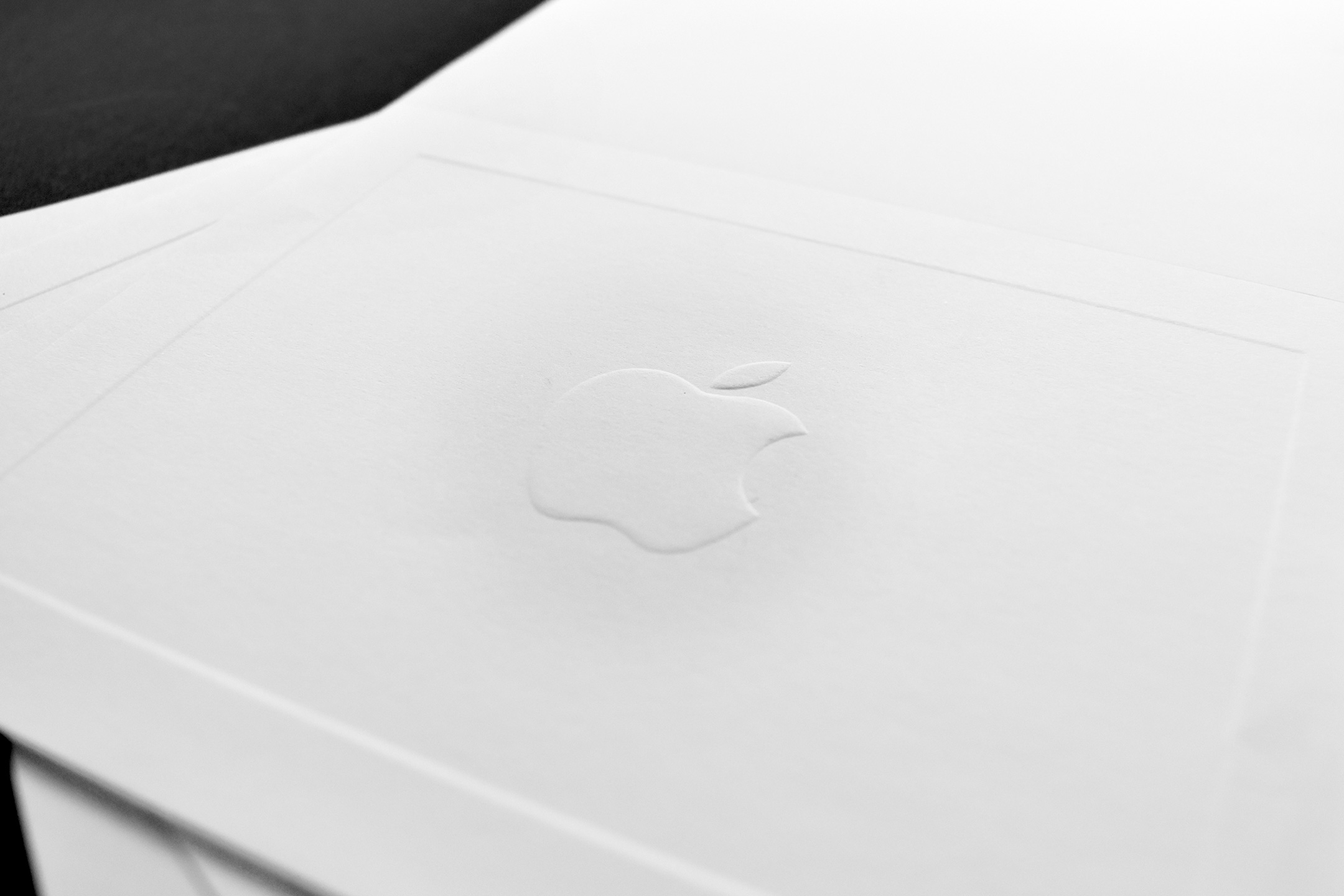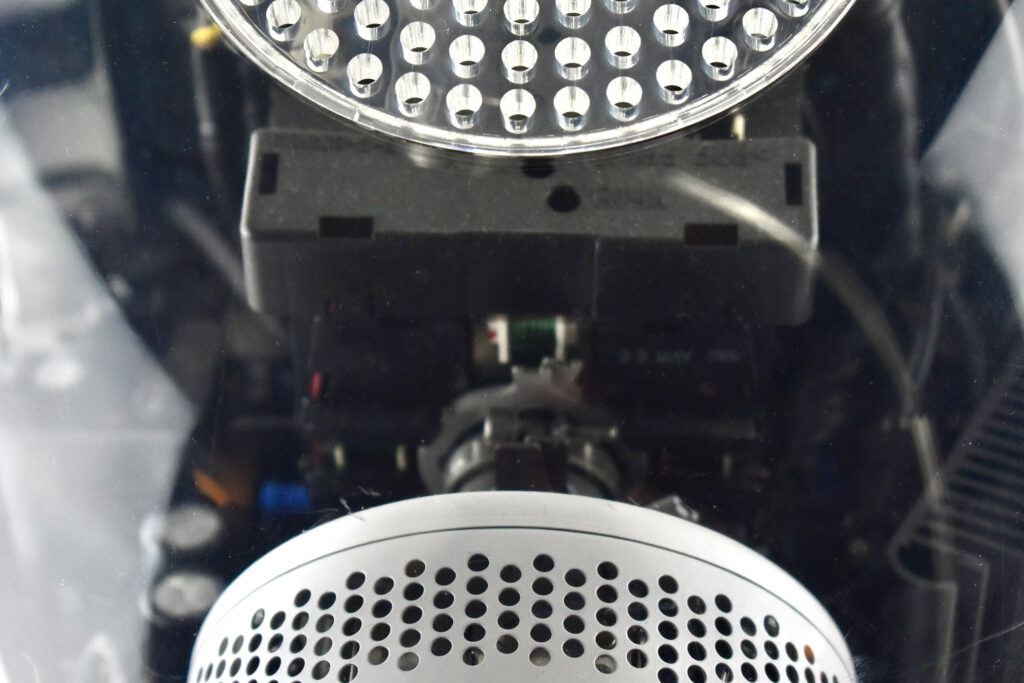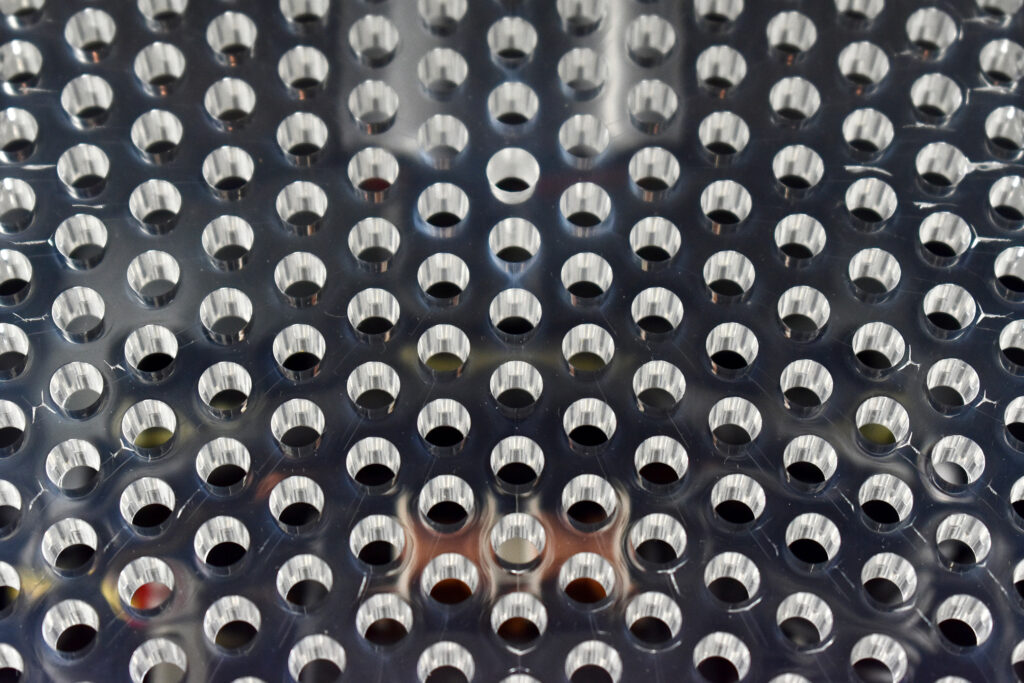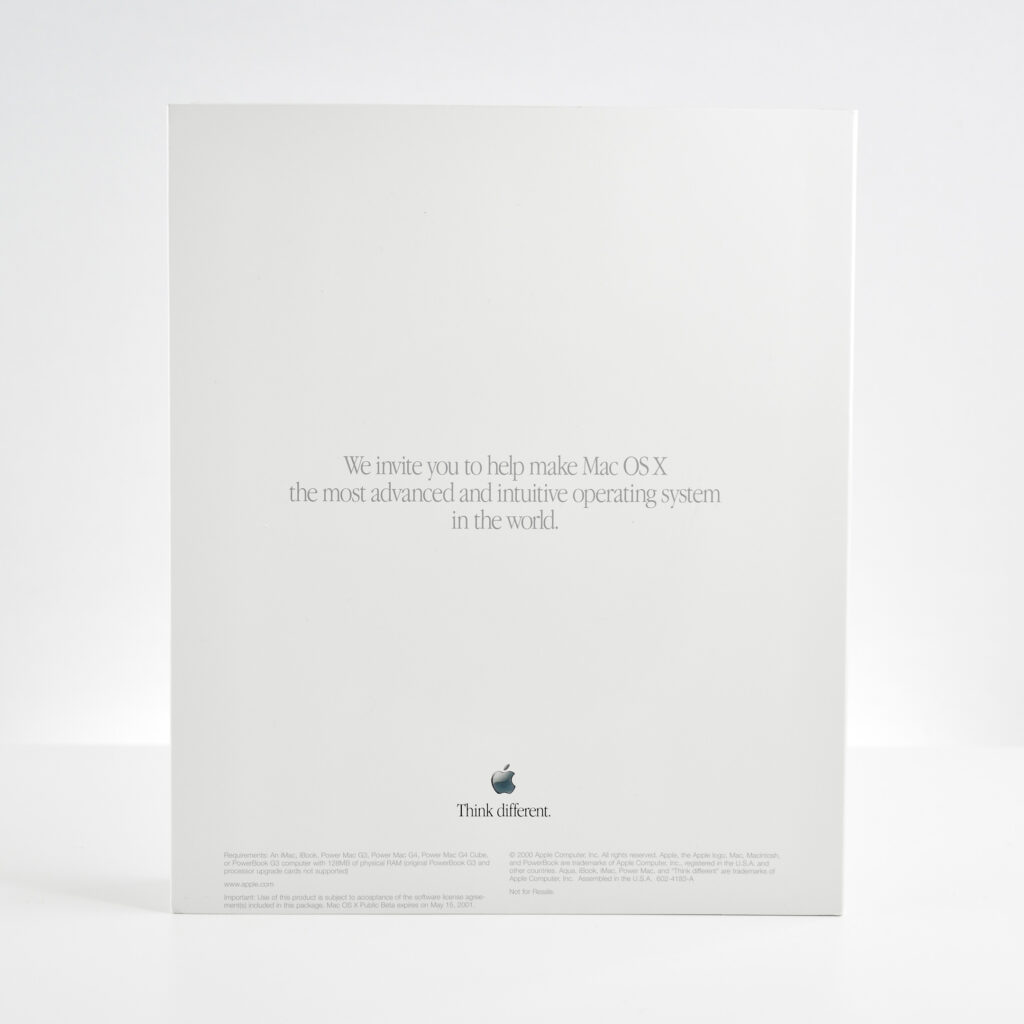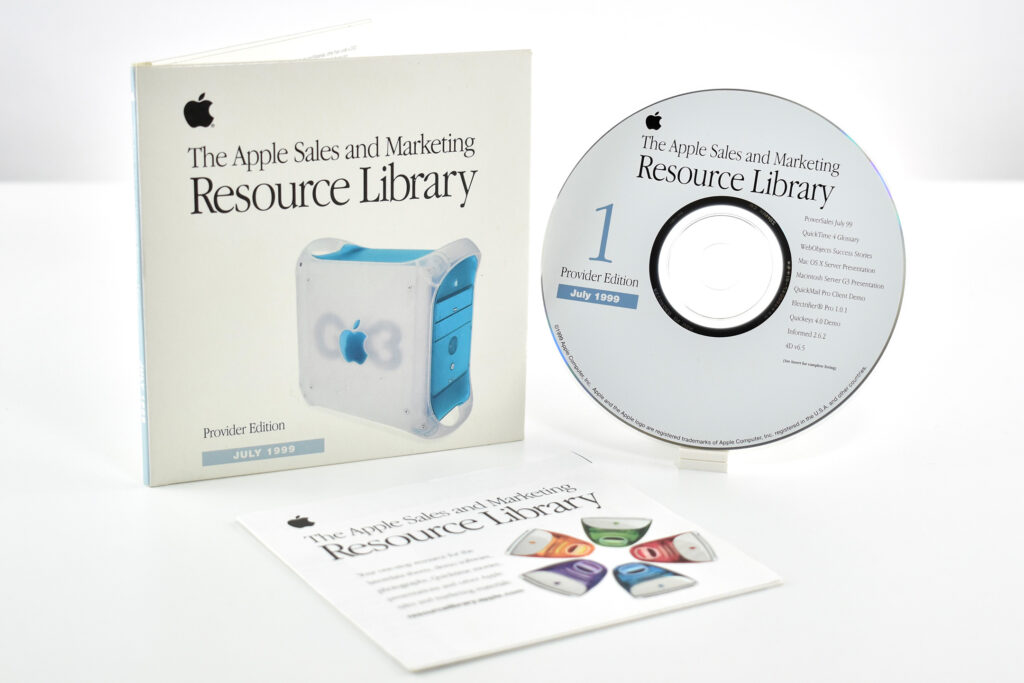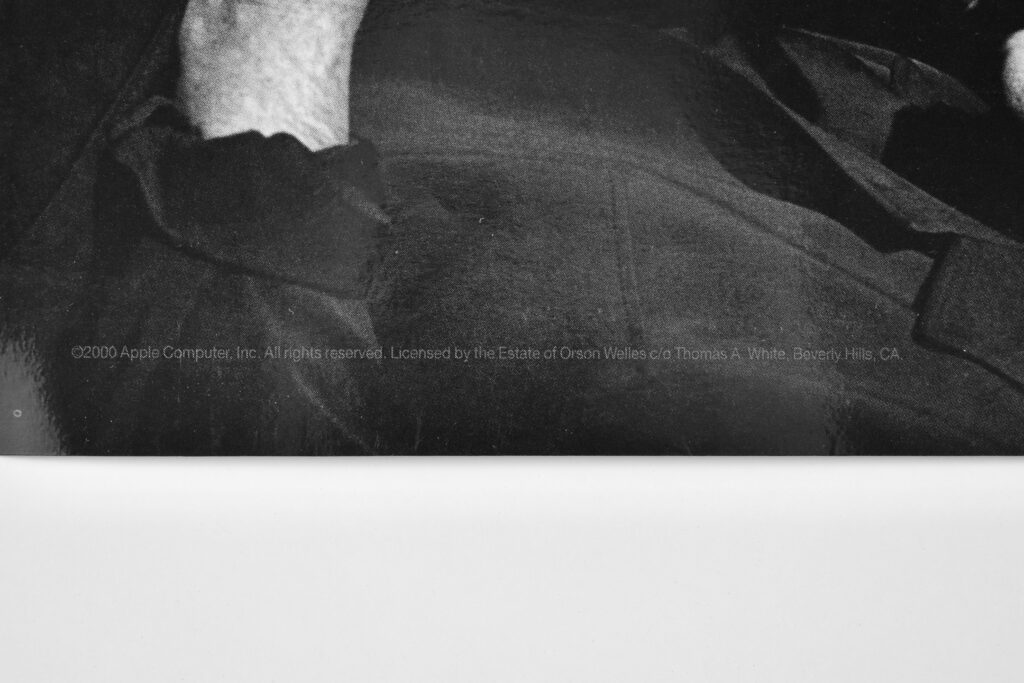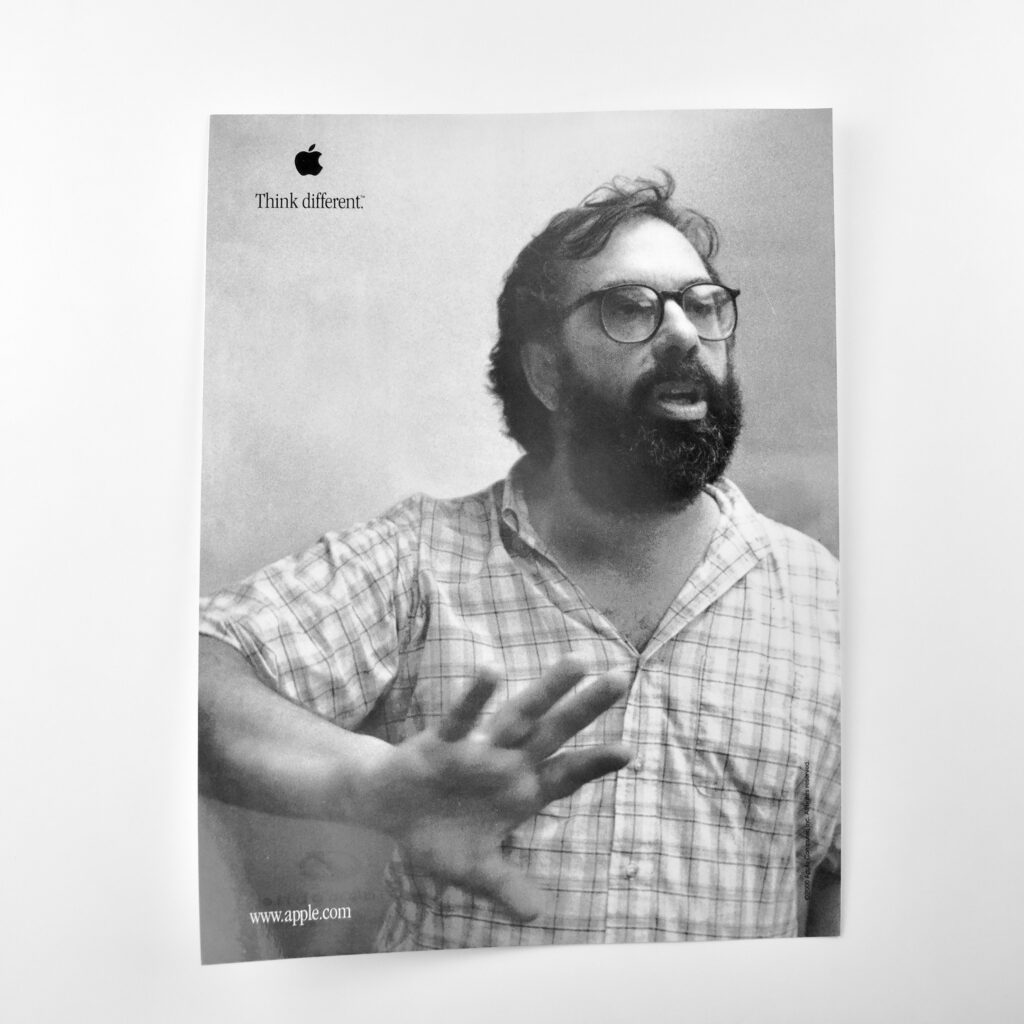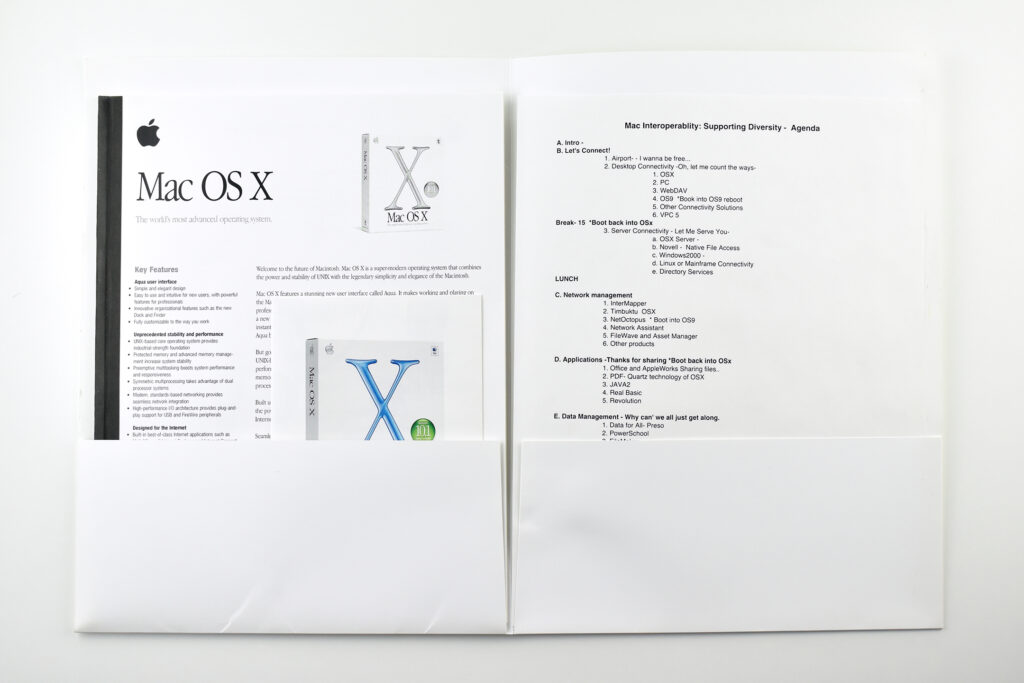This T-shirt is off-white with short sleeves and has a slightly larger collar than a typical t-shirt, hinting at the mock-turtle-neck style. The front of the shirt is blank, and the left sleeve has a black Apple logo.
The back of the shirt is printed with the complete Think Different manifesto in the Apple Garamond font. Apple Garamond was used by Apple from approximately 1984 to 2003—notably as part of Apple’s iconic Think Different ad series that first appeared in 1997.
Apple’s “To the crazy ones” manifesto reads:
To the crazy ones.
Here’s to the crazy ones.
The misfits.
The rebels.
The troublemakers.
The round pegs in the square holes.
The ones who see things differently.They’re not fond of rules.
And they have no respect for the status quo.You can praise them, disagree with them, quote them,
disbelieve them, glorify them or vilify them.
About the only thing you can’t do is ignore them.Because they change things.
They invent. They imagine. They heal.
They explore. They create. They inspire.
They push the human race forward.Maybe they have to be crazy.
How else can you stare at an empty canvas and see a work of art?
Or sit in silence and hear a song that’s never been written?
Or gaze at a red planet and see a laboratory on wheels?We make tools for these kinds of people.
While some see them as the crazy ones, we see genius.Because the people who are crazy enough to think they can
change the world, are the ones who do.Think Different.
The shirt was manufactured by Vistawear Classics. It is a size Large.
Sources: Wikipedia (Think Different, Apple typography)


